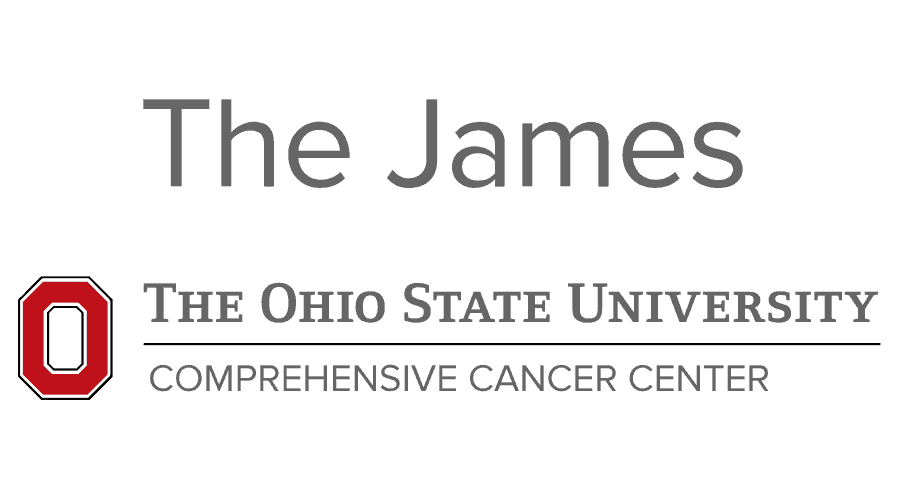
- April 2022
- Volume 16
- Issue 2
The Future of Nursing Must Be Diverse

Inclusion has to be an intentional part of the plan as strategies to diversify the nursing field are adopted.
More than 60% of nurses who identify as belonging to an ethnic minority have personally experienced an act of racism in the workplace, according to the findings of a new, national survey of nurses. This survey was conducted by the National Commission to Address Racism in Nursing.1
In a statement announcing these findings, Ernest J. Grant, PhD, RN, FAAN, commission colead and president of the American Nurses Association (ANA), said: “My colleagues and I braced ourselves for these findings. Still, we are disturbed, triggered, and unsettled by the glaring data, and [we are] heartbroken by the personal accounts of nurses.”2
Grant was elected president of the ANA in 2018. As a Black man, Grant represents 2 minority populations within the nursing profession. According to a United States Census Bureau American Community Survey, women make up over 85% of registered nurses (RNs), as well as nursing, psychiatric, and home health aides.3 Furthermore, race and ethnicity statistics have indicated that only 9.9% of RNs are Black or African American, 8.3% are Asian, 4.8% are Hispanic or Latino, and 0.4% are American Indian or Alaskan Native.4
“There is nothing diverse in race or gender about the nursing profession,” said Sheldon D. Fields, PhD, RN, FAAN, asso- ciate dean for equity and inclusion at the Penn State Ross and Carol Nese College of Nursing in University Park, Pennsylvania. “Nursing has always been this way. The problem is, as the largest segment of the health care workforce, nursing does not reflect the society in which it serves.”
Fields was named the associate dean for equity and inclusion in October 2020.5 This position was created after the advent of the COVID-19 pandemic and the widespread response to examine systemic racism after the death of George Floyd earlier that year. Of the more than a dozen freestanding colleges at Penn State, the College of Nursing was the last to hire a full-time diversity officer, he said.
The National Commission to Address Racism in Nursing was a dovetail project related to the ANA’s “The Future of Nursing 2020-2030: Charting a Path to Achieve Health Equity” report released in 2021.1 The report focused on “current and future challenges impacting the nursing workforce, its leadership, and education to reduce health disparities and address social determinants of health to advance health equity.”
“We will never be able to achieve health equity without addressing systemic and institutional racism,” Fields said. Thankfully, he believes nursing and nursing schools have begun to address the issue.
Diversity and Outcomes
The United States health care system is replete with examples of health care disparities. “Even when all other circum- stances are the same—their income, education, [and] ability to pay—people of color still experience worse health care outcomes, as evidenced by the persistence of health care disparities,” Fields said.
One of the most egregious examples of health care disparity is maternal and infant mortality rates. Black women are 3 times more likely to die from pregnancy-related causes than White women, and Black newborns die at 3 times the rate of White newborns.6,7 Examples also exist within the oncology realm. Black women are more likely to die from breast cancer, and Black men die at higher rates from prostate cancer than their White counterparts.8
“Whether it be oncology nursing or some other kind, if we are still getting disparate outcomes, that tells us something is wrong,” Fields said. “A lot of it has to do with people’s ingrained conscious or subconscious beliefs about other people.” These can include assumptions about someone’s ability to pay for care or the misconception that people of color have a higher pain tolerance. “All these assumptions can be consciously or unconsciously acted on,” he said.
Nurses are the largest segment of the health care workforce and they interact with patients more than any other health care workers in the system, Fields explained. If you take the same patient who may receive disparate care, and they interact with a charge nurse or physician who is a person of color, they tend to have better outcomes, he added.
“When we look at literature as it relates to racial concordance, we know Black patients who are treated by Black physicians have better outcomes,” said Timiya S. Nolan, PhD, APRN-CNP, ANP-BC, assistant professor at The Ohio State University College of Nursing and a nurse scientist at The Ohio State University Wexner Medical Center in Columbus. For example, race-concordant visits can be longer and result in higher patient ratings of care, medication adherence, or understanding of cancer risk.9-11
“We have also shown that patients, regardless of identifying as Black or White, may experience less implicit bias when under the care of a physician who identifies as Black,” 12 Nolan said. “That lets us know there is something to racial concordance, as it relates to Black individuals. But even those who identify as White might benefit from the care of a person who identifies as non-White.” A greater feeling of comfort can also apply for concordance in ethnicity, gender expression or orientation, or religion.
Diversity vs Inclusion
Diversifying the nursing workforce can not only result in better outcomes for patients but also can create a more inclusive space for providers. “Let’s face it, a lot of our time is spent in the places we are employed,” Nolan said. “You want to feel like you have a work family. Having a diverse workforce means there are individuals with whom you feel like you belong.”
"It is important to not be an “only,” Nolan added. “Being an ‘only’ is stressful. When you think about stress and the way stress impacts the body, we know discrimination and racism are not just surface-level [issues]. Chronically, they can manifest into disease.” she said. “If you [do not] have someone from a similar background, you do feel like you are up against the whole world when you go to work.”
Nolan stressed that a work family includes people of a different race or ethnicity who stand as allies in the effort to make health care more diverse and inclusive. These allies are an important part of the difference between diversity and inclusion. “Diversity is having people of different backgrounds,” she said. “Inclusion is providing a sense of belonging, where people sit around a table together and feel they have the power to speak up. Both are important for obtaining and maintaining diversity of the workforce.”
For diversity and inclusion to be more widespread, there must be a true commitment to the work, Fields explained. “The leadership has to buy in at the highest levels,” he said. “At a university, for example, if it is not in the president’s agenda and not part of the university’s strategic plan, then there is not an intentional application of real resources.”
By resources, Fields means money. “It is not enough to recruit diverse students and faculty if you don’t have the resources to support them, their research, and their ability to attend conferences,” he said. “Intentional, purposeful, [and] strategic-driven leadership is what works.”
In addition, people must be held accountable. “If there is bad behavior, [and] if people commit intentional racist acts, they cannot go unpunished,” Fields said. “If there are no consequences, it does not work.”
What also does not work is a numbers game, or the idea of recruiting a certain number of historically marginalized students or faculty. Recruiting does not matter if the institution does not also do all it can to ensure they have a welcoming and inclusive environment, Fields explained. Additionally, all people must feel like they work in an environment where they can openly be who they are, regardless of race, ethnicity, gender, gender expression, sexual orientation, religion, or socio-economic strata.
Students Are the Future
A better racial, ethnic, and gender balance is key to a successful nursing workforce, Fields said. Achieving that balance starts in nursing schools. “We must have holistic admissions to nursing school,” Fields said. “Those schools must include modules on cultural relevancy—not competency— and the awareness that culture’s impact on health is an ever-evolving process, not an end point.”
Nolan agreed that schools will be an important factor but said that the pipeline may have to start as early as grade school. “We [must] start early in getting students interested in nursing and health care, then foster support of individuals from diverse backgrounds, helping them to also see other folks like themselves who are matriculating and going through these programs,” she said.
Nolan’s interest in the field was sparked early through participation in Upward Bound, a federally funded program designed to provide opportunities for participants to succeed in their precollege performance. “You come together and get different exposure to opportunities that are not otherwise offered in the regular grade school programs,” Nolan said.
Later, at the University of Alabama at Birmingham, Nolan joined a sister program and was tutored by a mentor who was already in the nursing program. “These efforts [must] be ingrained into our education system so students can see different opportunities, employees, and employers, and find ways in which they fit into society,” she said.
Now, Nolan is a founding adviser of the Nursing Students of Color at The Ohio State University. The organization focuses its peer mentoring program on nursing and prenursing students. “We offer different engagement opportunities so students of color can see themselves and feel like they belong in our institution,” she said.
“We have the opportunity to teach them differently and set them up for cultural success,” Fields said. “That is on us as educators and scholars, and it is why I have dedicated the last part of my career to remaining in a university setting, where I have access to the next generation.”13 These students are the hope of the future, Fields added.
References
1. National commission to Address Racism in Nursing. American Nurses Association. Accessed March 7, 2022. https://bit.ly/3ioNfhj
2. New survey data: racism within the nursing profession is a substantial problem. News release. American Nurses Association; January 25, 2022. Accessed March 7, 2022. https://bit.ly/3w2OSJq
3. Day JC, Christnacht C. Women hold 76% of all health care jobs, gaining in higher-paying occupations. United States Census Bureau. August 14, 2019. Accessed March 7, 2022. https://bit.ly/3tZerbA
4. Nursing statistics. Minority Nurse. Accessed March 7, 2022. https://bit.ly/3KLhACu
5. Fields appointed as nursing’s first associate dean of equity and inclusion. Penn State. October 8, 2020. Accessed March 7, 2022. https://bit.ly/3i3vrIl
6. Working together to reduce Black maternal mortality. Centers for Disease Control and Prevention. Updated April 9, 2021. Accessed March 10, 2022. https://bit.ly/34Hq7Y1
7. Greenwood BN, Hardeman RR, Huang L, Sojourner A. Physician-patient racial concordance and disparities in birthing mortality for newborns. Proc Natl Acad Sci U S A. 2020;117(35):21194-21200. doi:10.1073/pnas.1913405117
8. American Cancer Society. Cancer facts & figures for African Americans 2019-2021. American Cancer Society; 2019. Accessed March 9, 2022. https://bit.ly/3ic6Lgw
9. Cooper LA, Roter DL, Johnson RL, Ford DE, Steinwachs DM, Powe NR. Patient-centered communication,
ratings of care, and concordance of patient and physi- cian race. Ann Intern Med. 2003;139(11):907-915. doi:10.7326/0003-4819-139-11-200312020-00009
10. Traylor AH, Schmittdiel JA, Uratsu CS, Mangione CM, Subramanian U. Adherence to cardiovascular disease medi- cations: does patient-provider race/ethnicity and language concordance matter?. J Gen Intern Med. 2010;25(11):1172- 1177. doi:10.1007/s11606-010-1424-8
11. Persky S, Kaphingst KA, Allen VC Jr, Senay I. Effects of patient-provider race concordance and smoking status
on lung cancer risk perception accuracy among African- Americans. Ann Behav Med. 2013;45(3):308-317. doi:10.1007/ s12160-013-9475-9
12. Sabin J, Nosek BA, Greenwald A, Rivara FP. Physicians’ implicit and explicit attitudes about race by MD race, ethnicity, and gender. J Health Care Poor Underserved. 2009;20(3):896-913. doi:10.1353/hpu.0.0185
13. Fields S, Wharton MJ, Ackerman-Barger K, Lewis, LM, Beard KV. The rise of diversity, equity, and inclusion (DEI) practi- tioners in adacemic nursing. OJIN. 2022;27(1_manuscript 3) doi:10.3912/OJIN.Vol27No01Man03
Articles in this issue
over 3 years ago
Will Requiring the DNP Improve the Quality of Oncology Nursing?over 3 years ago
2022 ASCO Gastrointestinal Cancers Symposium Highlightsalmost 4 years ago
Electronic Health Record Notes May Be Perpetuating Biasesalmost 4 years ago
Caring for an Immunocompromised Bone Marrow Transplant Recipientalmost 4 years ago
Understanding “Total Pain” in the Context of Oncology Carealmost 4 years ago
Decentralized Clinical Trials: Bringing Care Directly to PatientsNewsletter
Knowledge is power. Don’t miss the most recent breakthroughs in cancer care.
























































































